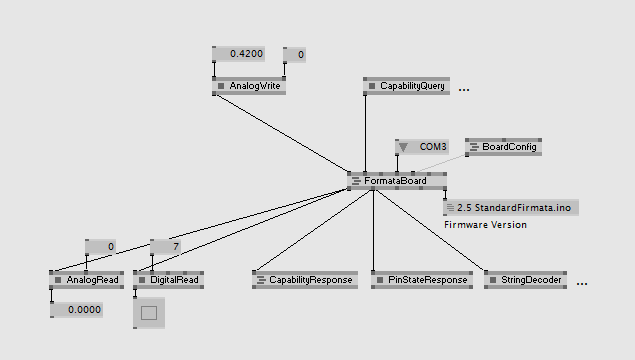Disclaimer: This thread is sparked from this blog post, announcing the VL Firmata nodes; but we need a common place to discuss how to support the Firmata Protocol
Wrap up: New VL Firmata Nodes have been announced; @soundanalogous brought up the issue, that the strictly named nodes are masking the capabilities of the hardware Firmata supports; @robotanton suggested to comletely remove the Arduino-Nodes and replace them with a generic Firmata-Device node.
I agree with @soundanalogous. Nevertheless, the current, as well as the new VL nodes, do support the use of plain Firmata, regardless ofg the board. Just not in a nicely, conveniently wrapped up node such as the named [Arduino (....)] ones. That was an important part for the second C# implentation.
This, I also always show in any Firmata Workshop I do, so people understand, that it a mere issue of transport, not a product of some sort. It is easy to use, but can be powerful, when used standalone as well.
Regarding the Capability Report: It works with the StandardFirmata, which is the only default firmware I am aware of, which reports this back. Used as transport, it does not and is unneccessary overhead, when one knows, what the capabilities are. So we are maybe talking about a StandardFirmata wrapper node? That sounds as a good idea to me.
I don’t agree with deleting the Arduino-nodes. As beginner one will search for this term, not Firmata. I#d rather suggest, we find a way of generating the nodes, either from the Boards.h file (considered this in the past, but is one more dependency to track, touches the complex packaging topic).
A two layered wrapping then?
I would like to keep it very very simple, as the protocol is so simple.

